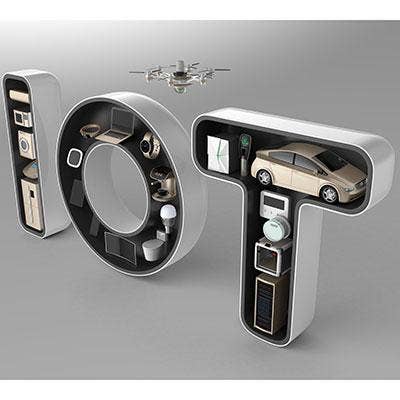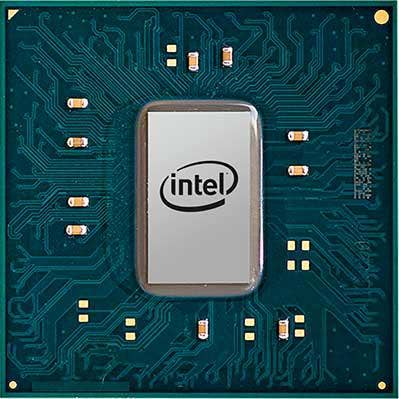The 10 Biggest Internet Of Things Stories Of 2016

Internet of Things Explosion
The Internet of Things market is forecasted to reach $1.7 trillion in 2020, according to market research firm IDC. And in 2016, channel companies and vendors worked together to make that outstanding number a reality.
Last year, many vendors launched IoT platforms and made deep investments in connected applications – such as IBM's announcement that it would pump $3 billion into developing IoT-related cloud services and software.
However, 2016 was an even bigger year for IoT, as vendors began to understand where they stand in the market and develop their strategy around their channel platforms in the IoT space. On top of that, customers are beginning to see the opportunities – and, more importantly, the security challenges – surround Internet of Things devices.
Following are the biggest Internet of Things stories in 2016.
(For more of our 2016 retrospective, check out 'CRN's 2016 Tech Year In Review.')

10. Distributors Continue To Build Out IoT Practices
If 2015 was the year for vendors like Intel and IBM to launch new Internet of Things platforms, 2016 was the year for distributors to throw their hats into the IoT ring.
Tech Data, for instance, unveiled a new IoT practice in July, focused on aggregating different products from various vendors in verticals like manufacturing, logistics, retail and smart cities.
Other distributors made deepened their strategies around their existing IoT practices – Avnet, for instance, closed $908 million acquisition of British distributor Premier Farnell in October to strengthen its Industrial IoT practice.

9. Vendors Become More Strategic With IoT Products
In 2016, technology companies debuted products designed to make implementing these IoT devices in homes and the workplaces easier – and more secure.
Amazon in May launched the AWS IoT Button, which integrates Amazon's Dash hardware with AWS IoT, the managed cloud platform that lets connected devices easily and securely interact with cloud applications and other devices. The offering was designed for developers to get started with AWS IoT, AWS Lambda, Amazon DynamoDB, Amazon SNS, and many other Amazon Web Services without writing device-specific code, the company said. Meanwhile, Intel at its August developer conference introduced its Joule platform, a module built for IoT applications by packing a high-performance system-on-module into a low-power package. That maker board enables users to take a concept from prototype into production at a "fraction of the time and development cost," according to Intel.

8. Vendors Link Up To Drive IoT
Vendors are teaming up to offer joint IoT solutions for channel partners in different markets, like the cloud and unified communications spaces.
In September, Cisco and Salesforce teamed up to co-develop and co-market new joint offerings that combine their platforms in collaboration, IoT and contact center with Salesforce Sales Cloud, IoT Cloud and Service Cloud offerings.
Meanwhile, Intel and Google in November announced they would work together to drive more customers to the cloud by integrating their respective software and hardware capabilities to better power container management, machine learning and Internet of Things (IoT) workloads. The strategic alliance will focus not only on technology integrations but also on joint marketing and education efforts geared to the vendors' channels.
"You'll see a lot more of these types of things in the next few months where the extension of the functionality of a cloud service provider outside of a cloud and into some on-prem and device level integration," Jonathan Ballon, VP of Intel's Internet of Things Group, told CRN.

7. Operational Technology Is The Next Big Thing For IoT Vendors
In 2016, vendors started to realize the critical role that operational technology (OT) and building automation will play in the Internet of Things – and began to build out their OT expertise through partnerships and acquisitions.
Intel, which provides the chips that go into industrial IoT gateways, has been looking to operational technology companies – such as KMC Controls, which works with a cadre of OT solution provider – to help provide building automation and Industrial IoT implementation.
"It's really the OT players that are getting a lot more traction faster than those large global SIs, because they bring subject matter knowledge of that OT environment," said Intel's Ballon.
Cisco has also tapped into OT, announcing in November a strategy to work with IoT manufacturers to certify their devices for use with Cisco networks.

6. Telecom Vendors Dive Deeper Into IoT
Telecom vendors in 2016 were rushing to carve out their share of the IoT market. Verizon, in particular, made great investments in its IoT platform, ThingSpace– starting with a blockbuster $2.4 billion acquisition of fleet and mobile management company Fleetmatics, and an acquisition of smart LED lighting provider startup Sensity Systems. In addition to acquisitions, Verizon also teamed up with Qualcomm Technologies to integrate its platform into Qualcomm's low-power modem, in an effort to serve up an extensive IoT offering.
AT&T, for its part, has been beefing up its IoT strategy by rolling out a new fleet and mobile workforce management offering, AT&T Fleet Complete, to AT&T Partner Exchange members.

5. Vendors Place Stakes In IoT Market Through Research, Startup Investments
Many vendors are deepening their investment in IoT by committing more money to IoT research, startup funding, and expanded partner ecosystems.
SAP in September pledged a $2.2 billion investment over the next five years to accelerate its IoT solution portfolio, increase sales and marketing, and grow its ecosystem of partners and startups in the IoT market. In June, Samsung said it would dish out $1.2 billion over the next four years for Internet of Things-related research and startups, solidifying the company's emphasis on the lucrative IoT market. And in October, IBM announced it would pump $200 million into a new global headquarters for its Watson IoT business in Munich, which will be home to some of the industry's first cognitive IoT laboratories.

4. Acquisitions, Acquisitions … And More Acquisitions
While many vendors in 2015 were looking at the best ways to profit off the Internet of Things, in 2016 more companies began to take out their wallets and actually build out their IoT platform.
Cisco started the year off with a $1.4 billion acquisition of Jasper in February, a partner with an IoT service platform that automates the management of services across connected devices and enables companies to create new business models.
Verizon also paid the big bucks for IoT in 2016, announcing in August it would acquire fleet and mobile management company Fleetmatics Group for $2.4 billion. The Waltham, Mass.-based company is known for its GPS tracking products, services and software platforms for small and midsized business customers.

3. Vendors Announce Layoffs, Restructuring To Prioritize IoT
In 2016, more vendors began to put the Internet of Things on the forefront of their overall strategies, through layoff and restructuring efforts aimed at refocusing on IoT.
Intel in June announced it was cutting 12,000 jobs globally – about 11 percent of its workforce – as part of an overarching restructuring effort that CEO Brian Krzanich said would amp up its IoT and cloud sales, reducing dependence on the PC market.
Cisco followed the chip giant's footsteps in August, announcing it would undertake a major restructuring effort to invest in priority areas, like IoT and cloud. As part of this effort, the company said it would lay off around 5,500 employees – about 7 percent of its global workforce.

2. Channel Takes On Bigger Role In IoT Market
The channel was on the forefront of the Internet of Things market, as resellers, system integrators and independent software vendors began to understand the opportunities and benefits of the market better. Some channel partners are even beginning to make money off the Internet of Things. According to a CRN Intelligence survey of 241 solution providers, 26 percent of respondents said 11 percent or more of their company's revenue currently comes from IoT-related products and services, with 12 percent saying IoT drives 21 percent or more of their revenue today.
Vendors, for their part, are also realizing the critical role that channel partners play in customizing and integrating solutions. According to an ABI Research study, vendors are becoming more strategic in expanding their partner programs to loop VARs and system integrators into their IoT strategies.

1. Security Matters: IoT Devices Compromised In DDoS Attacks
The entire IoT industry was upended on Oct. 21, when a security breach was through vulnerable IoT devices.
Hackers behind the distributed denial of service attack (DDoS) used connected consumer devices, including webcams, routers and video recorders, to overwhelm servers at Dyn, Inc. and led to the blockage of more than 1,200 websites – including Twitter and Netflix.
The DDoS attack shed light on the risks behind the security vulnerabilities of many IoT devices, and many solution providers called on manufacturers to invest more in security measures behind connected products.
The attack also led to manufacturer Hangzhou Xiongmai recalling the web cameras that use its circuit board and other components – one of the many devices used in the attack.